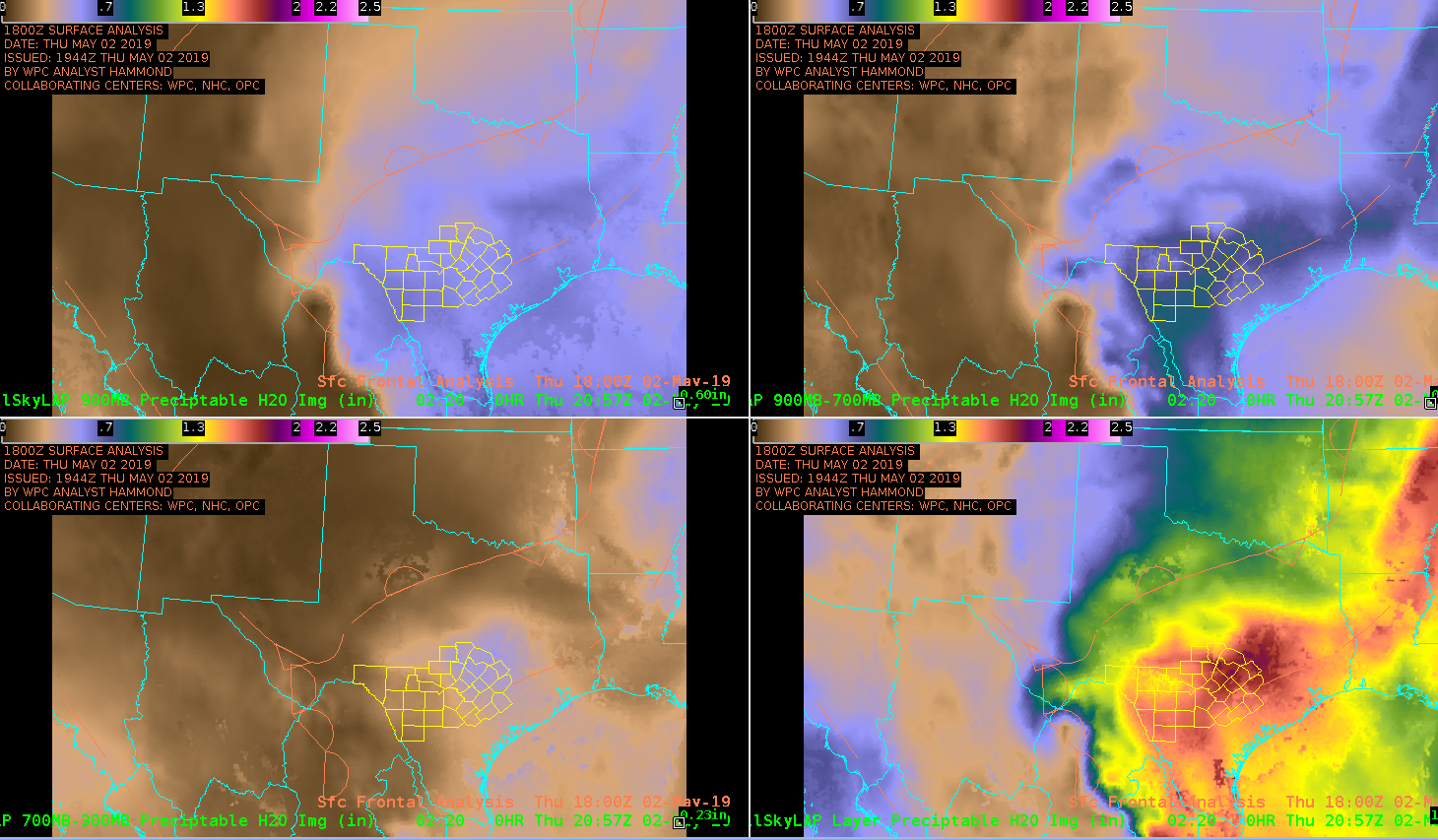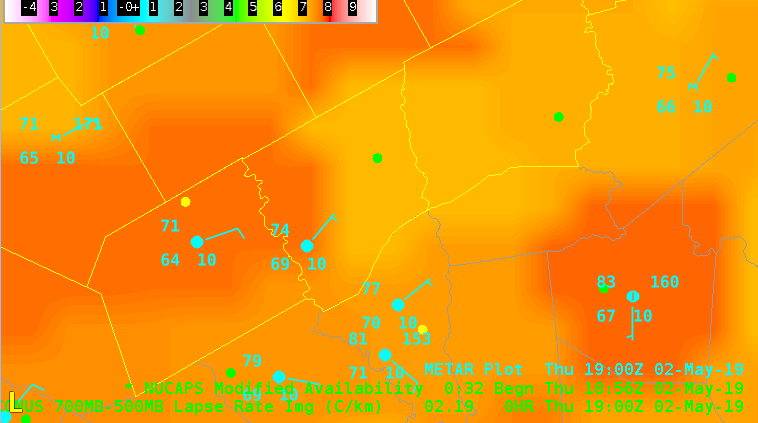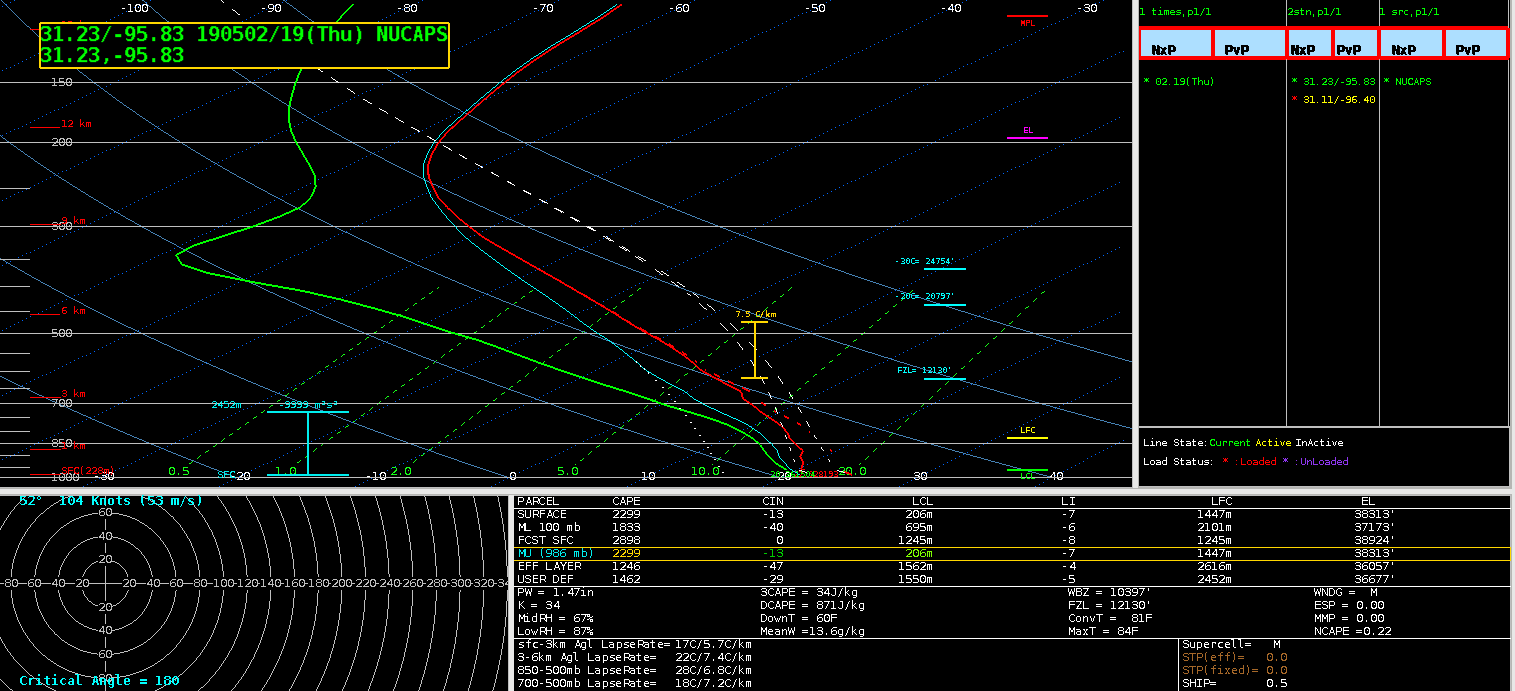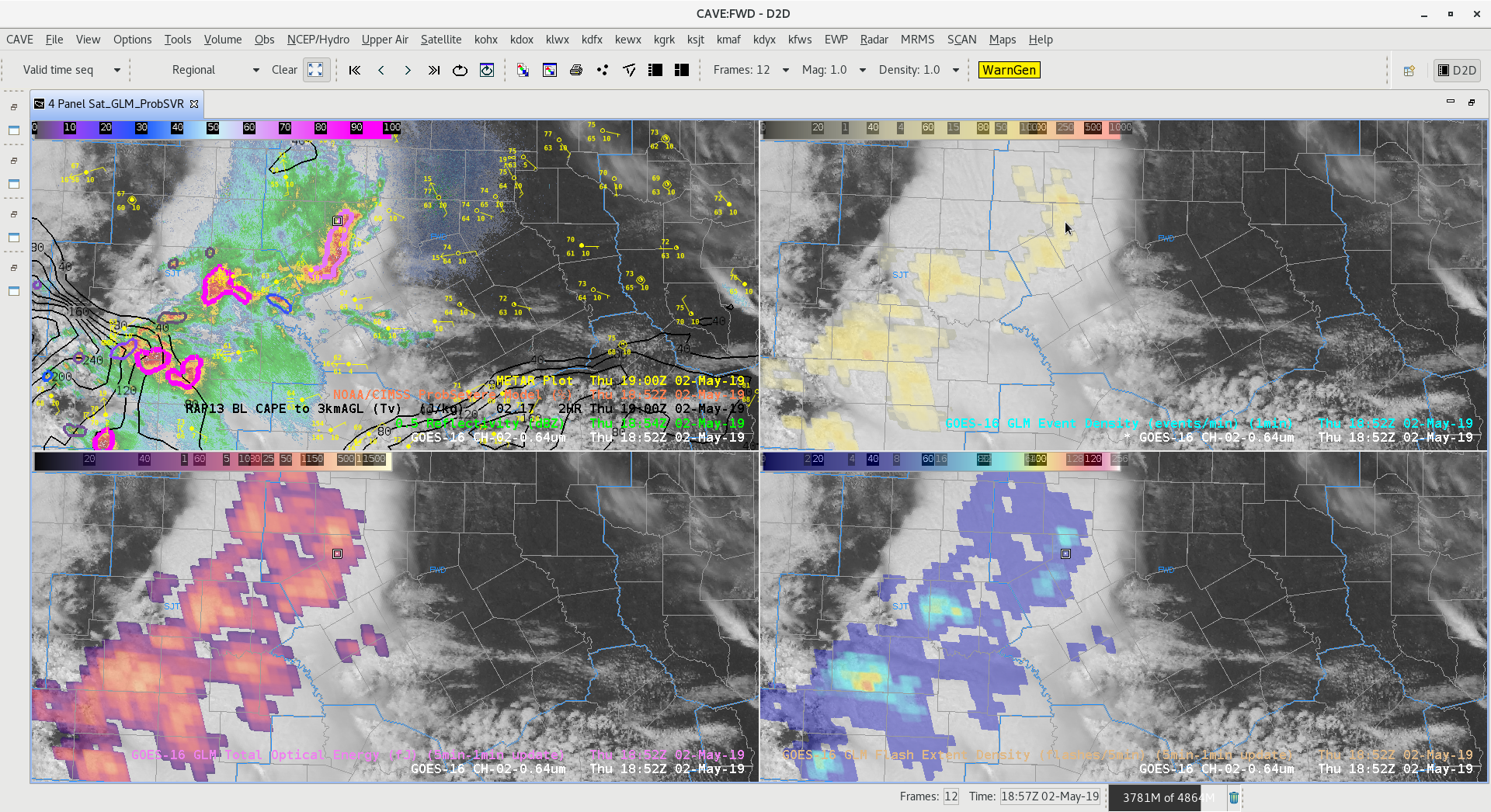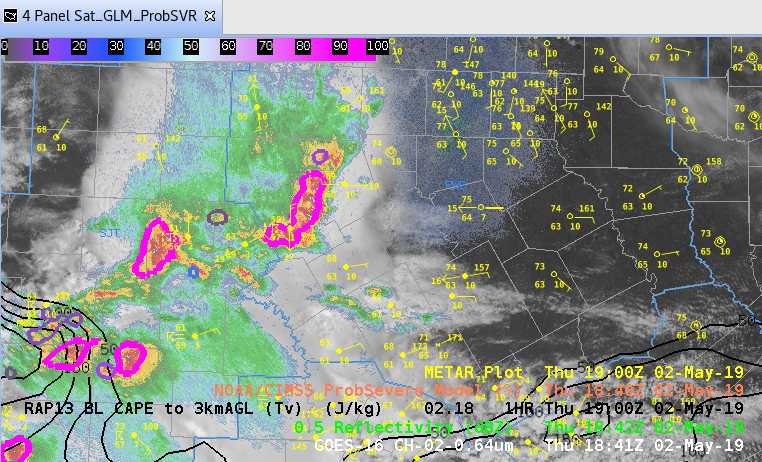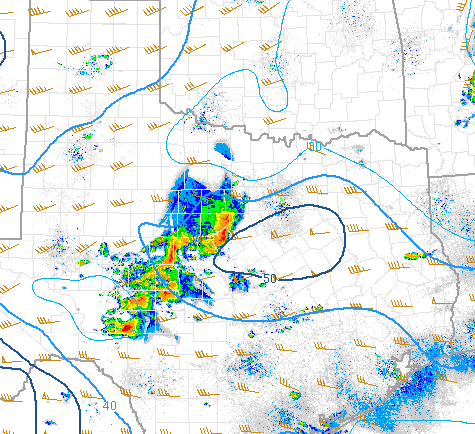
Favorable 0-6km shear aloft from SPC Mesoanalysis page above across FWS CWA
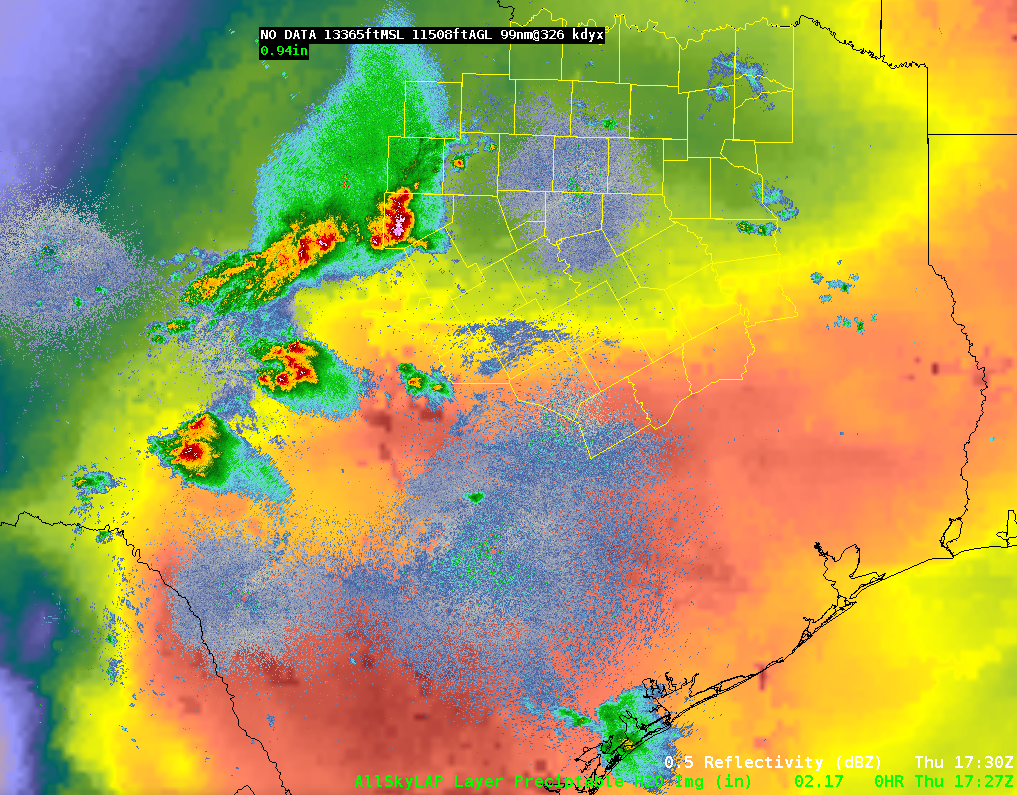
All Sky Total PW above shows deeper moisture in southern FWS CWA.
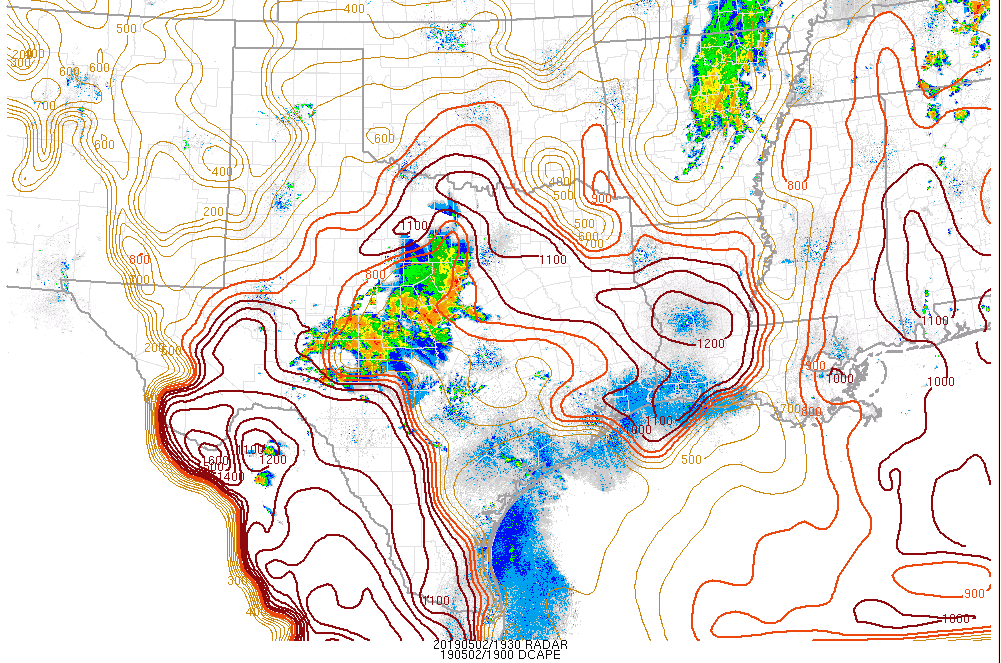
High DCAPE values across the FWS area per SPC mesoanalysis page above

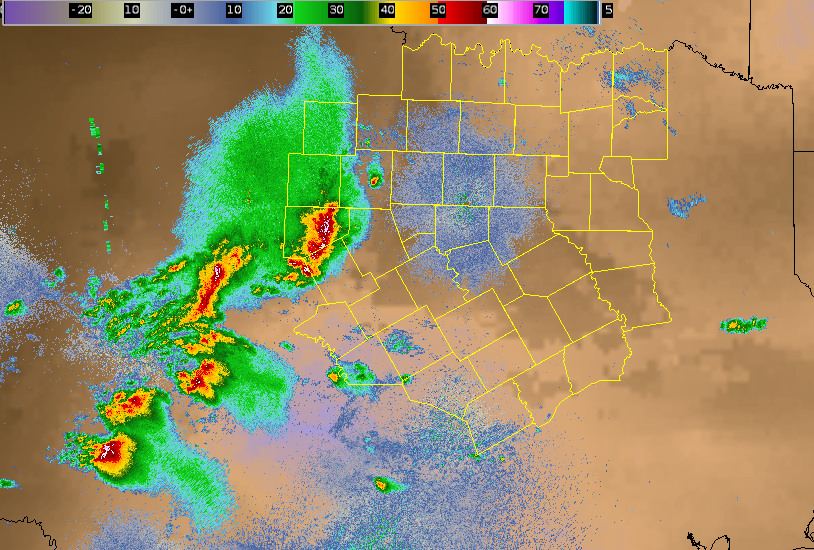

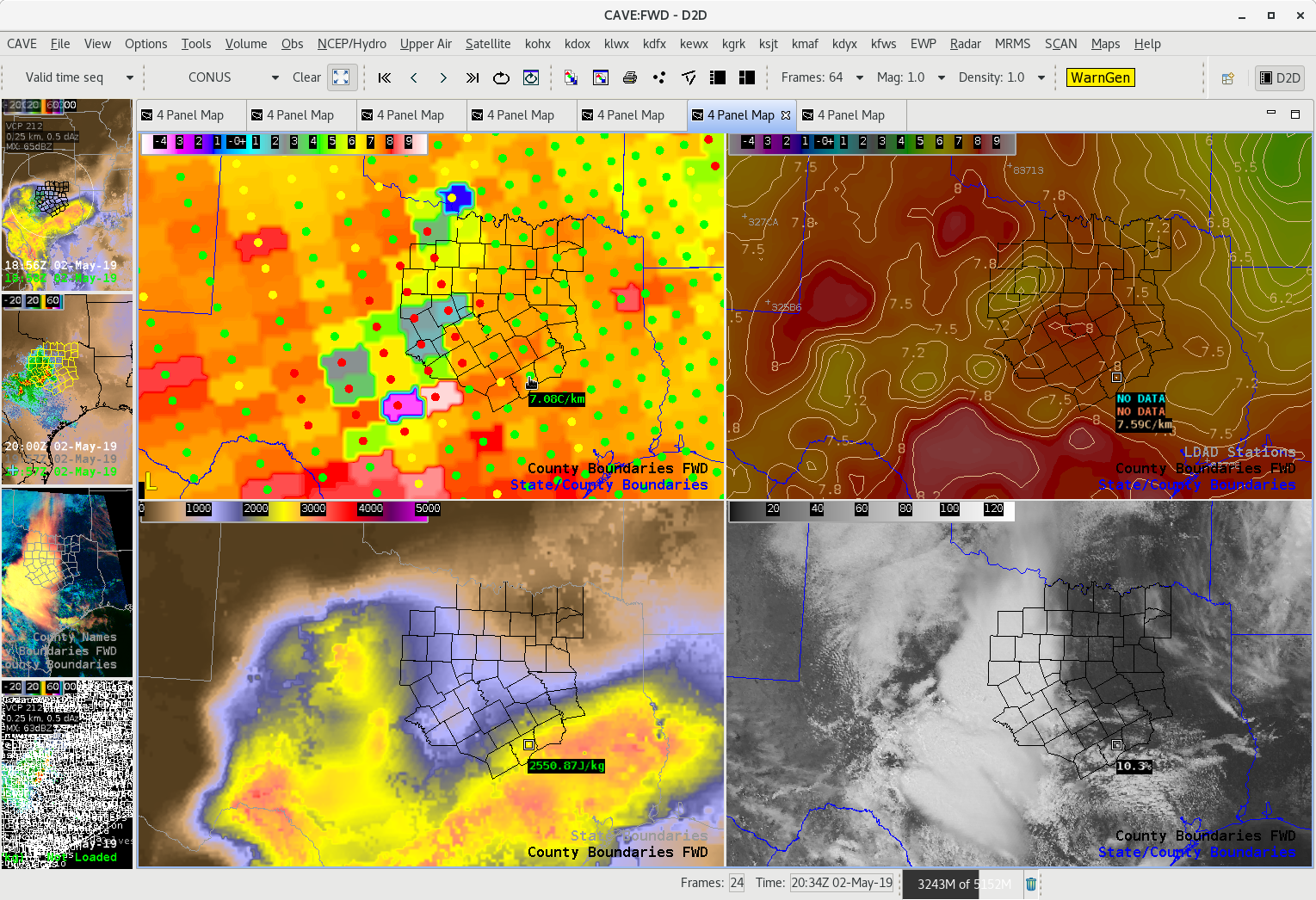

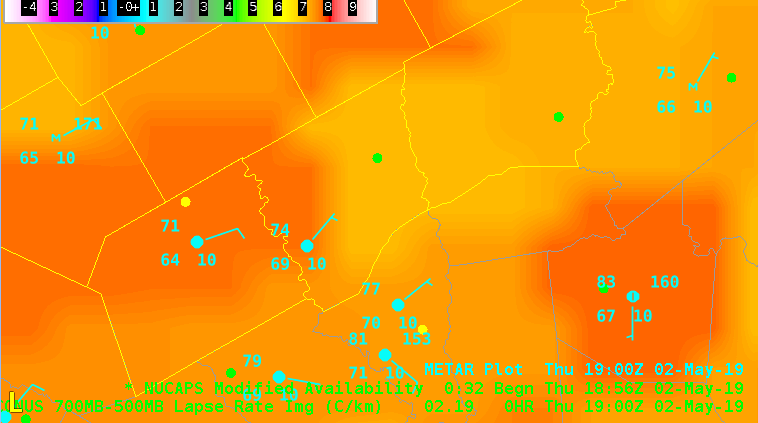
Mesoscale Discussion…40-50kts of wind shear aloft and high DCAPE values show conditions favorable for severe winds to occur, mainly for locations where All Sky total PW shows strong moisture gradient along surface front in southern part of the CWA.

This is a loop of radar and All Sky LAP CAPE. Notice the higher CAPE values in the southern part of the CWA. This is were linear convection could grow upscale become surface based and capable of produce damaging winds. -Jake Johnson
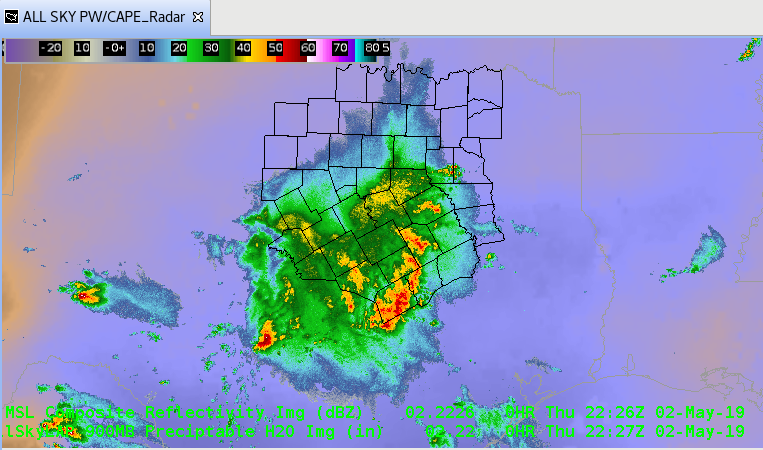

The ProbSevere Wind spiked to 80% with a thunderstorm that later moved across southern FWS CWA, which was our area of concern.
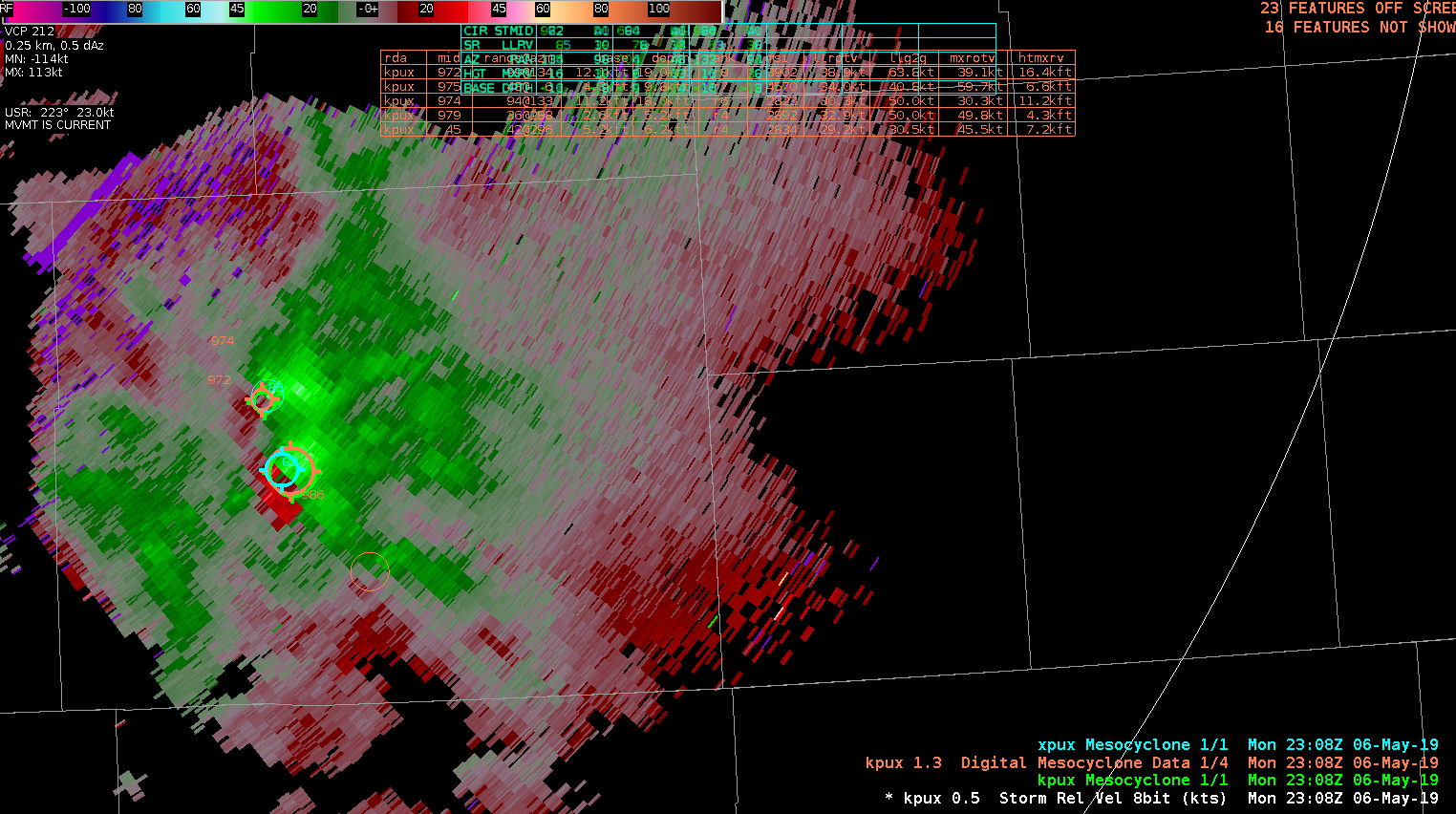

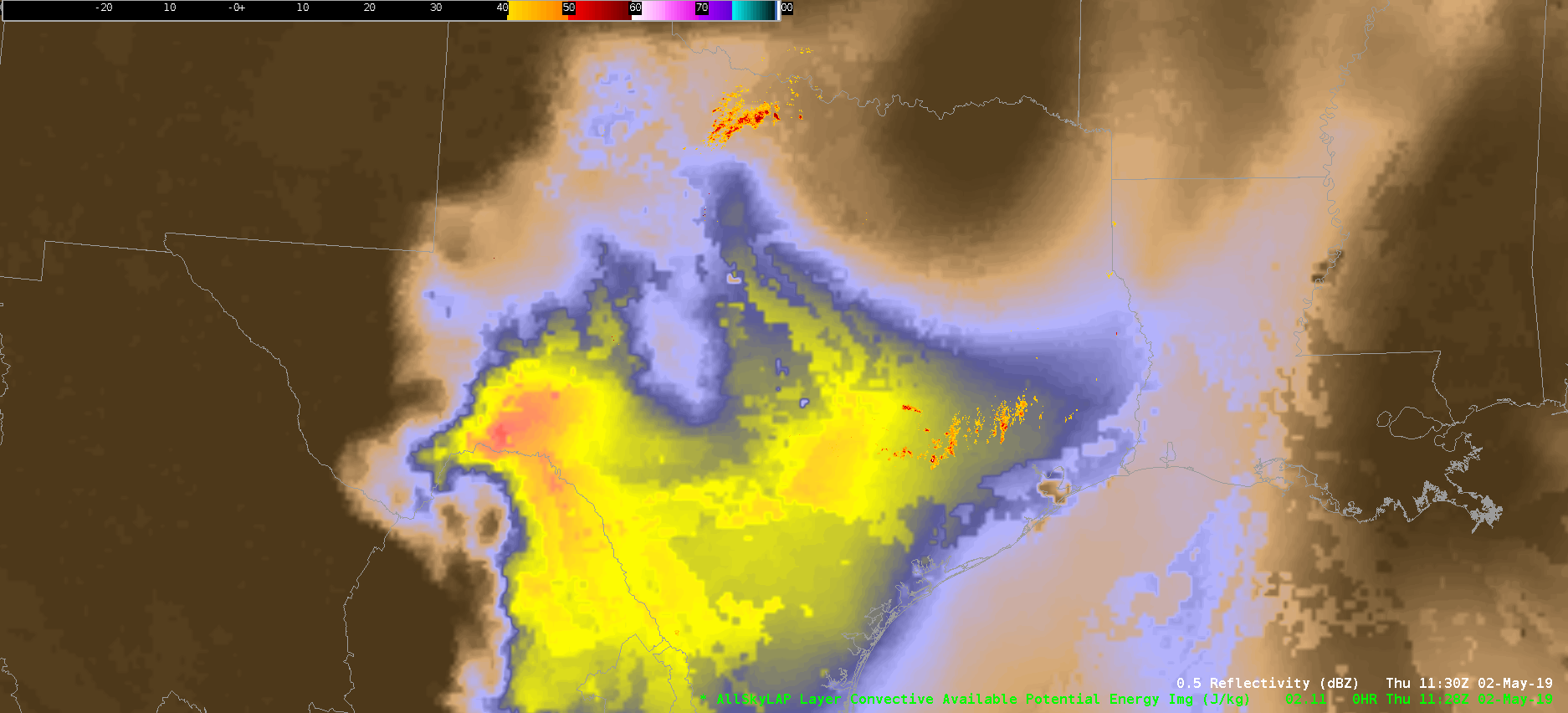

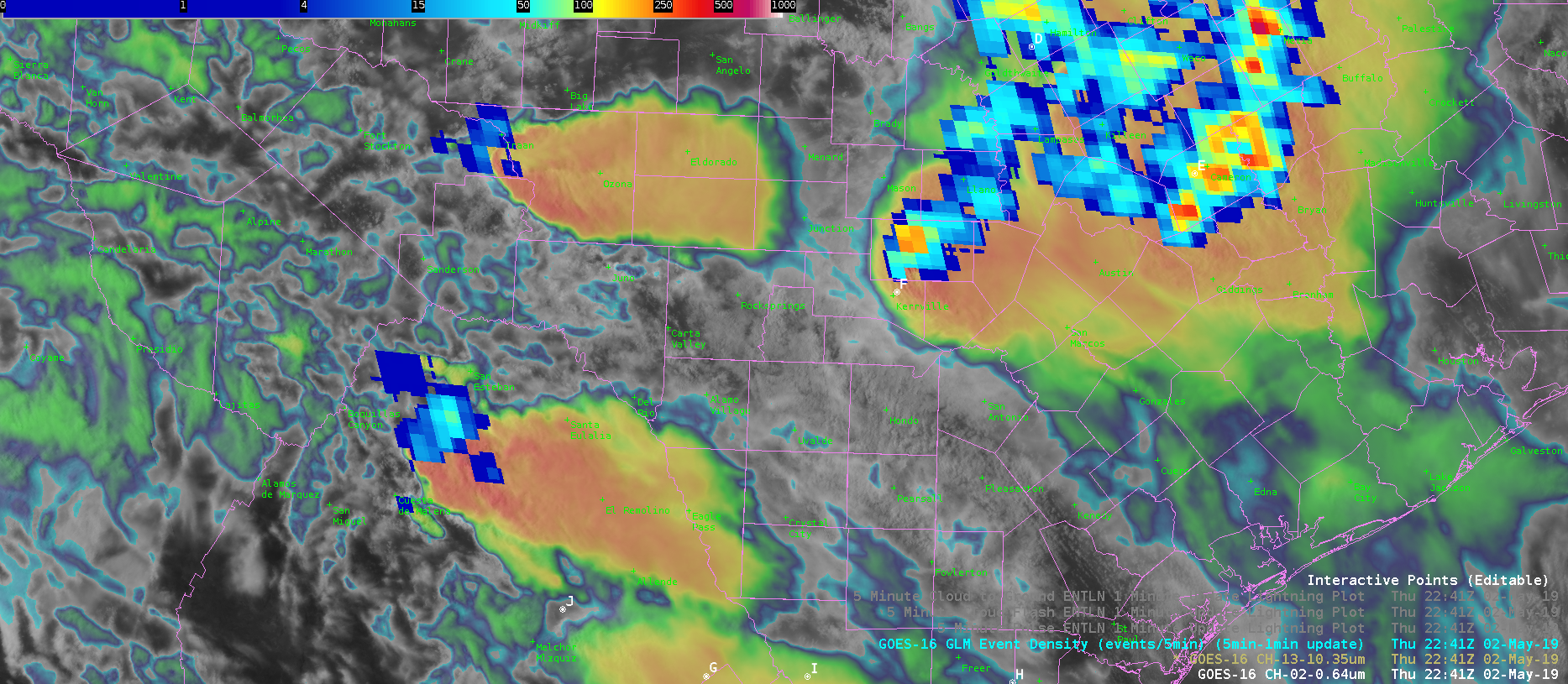
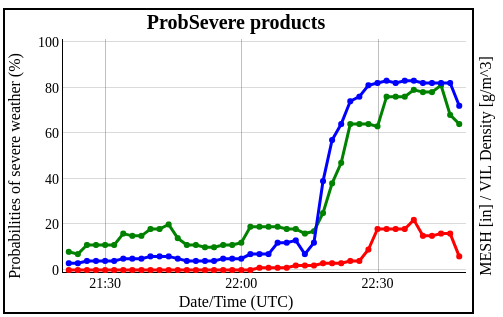
 This loop shows how event density evolved as a supercell rightmoved in west Texas. Another good example of GLM data showing a minimum during the most intense phase of convection. GLM data counts recovered somewhat toward the end of the loop.
This loop shows how event density evolved as a supercell rightmoved in west Texas. Another good example of GLM data showing a minimum during the most intense phase of convection. GLM data counts recovered somewhat toward the end of the loop.